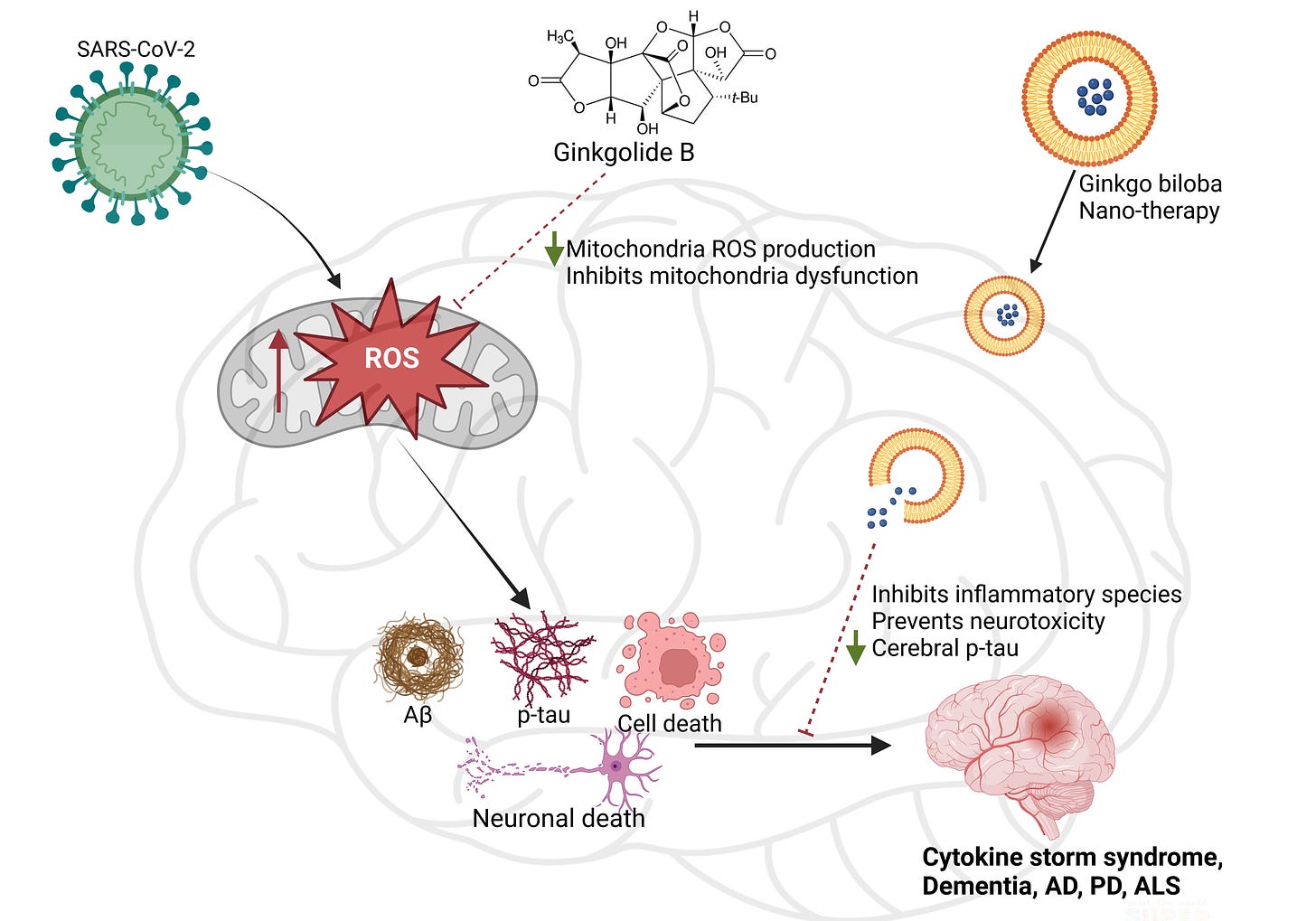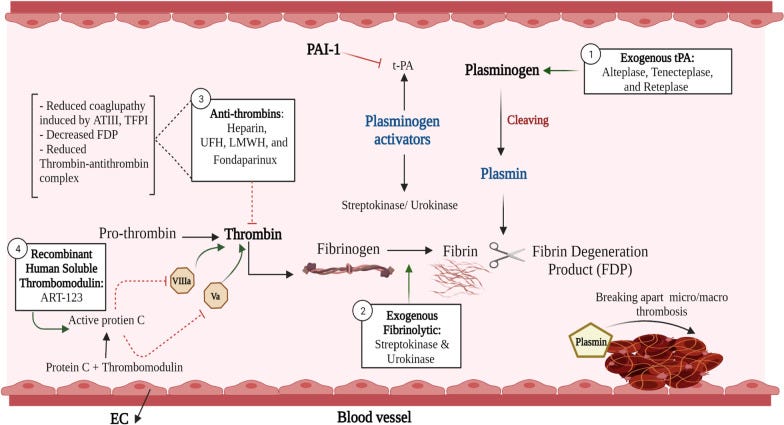Friday Hope: Gingko Biloba: A Fibrinolytic and Potential Neurotherapeutic Management of Long COVID
The fibrinolytic effects may ameliorate the microclots and subsequent fibrosis induced by the Spike Protein.
Given the recent paper discussed yesterday confirming my SPED (Spike Protein Endothelial Disease) hypothesis which includes systemic fibrosis, it is imperative to find therapeutics which can break down the causative microclots. Fortunately there is a natural therapeutic which has this ability. Yes – once again nature does not disappoint. Today’s hero is Gingko Biloba. It is a most ancient soul.
Ginkgo biloba, commonly known as ginkgo or gingko (/ˈɡɪŋkoʊ, ˈɡɪŋkɡoʊ/ GINK-oh, -goh),[5][6] also known as the maidenhair tree,[7] is a species of gymnosperm tree native to East Asia. It is the last living species in the order Ginkgoales, which first appeared over 290 million years ago, and fossils very similar to the living species, belonging to the genus Ginkgo, extend back to the Middle Jurassic epoch approximately 170 million years ago.[2] The tree was cultivated early in human history and remains commonly planted, and is widely regarded as a living fossil.
Ginkgo biloba
https://en.wikipedia.org/wiki/Ginkgo_biloba
Gingko has a remarkable (of many) property in that it acts as a Plasminogen Activator – it activates the body’s machinery that breaks up clots.
Intravascular thrombin/fibrin formation pathway and related anti-thrombolytic therapy. *Created with BioRender.com
The above graphic shows how the body breaks down clots. This process can be enhanced by exogenous (injected, in this case) plasminogen activators. Two well-known ones are Urokinase (UK) and Streptokinase (SKA). Urokinase is found in the kidneys. Streptokinase is a pharmaceutical.
The wonderful thing about Gingko is that it achieves the same effect as UK and SKA. It is a plasminogen activator. And, for endothelial cells!
The effects of thrombo-prevention, such as antiplatelet and anticoagulant activity, have been reported with the usage of Ginkgo biloba extract (GbE); however, the detailed mechanism has not yet been fully investigated, especially the role of Krüppel-like factor 2 (KLF2). This study aimed to investigate whether GbE can activate KLF2 and then induce thrombomodulin (TM) and tissue-type plasminogen activator (t-PA) secretion to enhance the effects of thrombo-prevention. Different concentrations of GbE were incubated with human umbilical vein endothelial cells (HUVECs) to evaluate its effect on endothelial cells. We found that KLF2 expression is correlated to the risk of atherosclerosis and venous thromboembolism in clinical practice. In the HUVEC cell model, GbE stimulated the expression of KLF2 in a dose-dependent manner. Moreover, TM and t-PA secretion increased when the cells were cultured with GbE.
Ginkgo biloba Induces Thrombomodulin Expression and Tissue-Type Plasminogen Activator Secretion via the Activation of Krüppel-Like Factor 2 within Endothelial Cells
https://www.worldscientific.com/doi/10.1142/S0192415X20500184?url_ver=Z39.88-2003
I believe this is sufficient evidence to warrant trialing GbE for those suffering from Long COVID and Spike Protein in injury/pathology (microclotting). There is proof that GbE may have therapeutic benefits for Acute COVID, particularly in addressing ARDS.
The antiviral effect of EGb is mediated by different mechanisms, including blocking SARS‐CoV‐2 3‐chymotrypsin‐like protease that provides trans‐variant effectiveness. Moreover, EGb impedes the development of pulmonary inflammatory disorders through the diminution of neutrophil elastase activity, the release of proinflammatory cytokines, platelet aggregation, and thrombosis. Thus, EGb can attenuate the acute lung injury and acute respiratory distress syndrome in COVID‐19.
Ginkgo biloba in the management of the COVID‐19 severity
https://www.ncbi.nlm.nih.gov/pmc/articles/PMC9348126/
Beyond the benefits Gingko may have for treating Spike Protein induced microclots and subsequent fibrosis, Gingko also shows great promise in treating the neurotherapeutic management of long COVID.
It is indispensable to continue studying the mechanisms that underlie the pathophysiological process of SARS-CoV-2 infection. This will enable researchers to uncover the therapeutic targets that may be used for their management. According to this review, it may be suggested that Ginkgo biloba has potential positive effects, including anxiolytic, antineurotoxic, anti-inflammatory and anti-apoptotic functions, and has been explored in treating neurological disorders, particularly AD, PD, and dementia.
Ginkgo Biloba and Long COVID: In Vivo and In Vitro Models for the Evaluation of Nanotherapeutic Efficacy
https://www.mdpi.com/1999-4923/15/5/1562#
As we have demonstrated, Gingko may be a very important therapeutic in managing, perhaps even preventing, the microclots induced by the Spike Protein of SARS-CoV-2 which leads to a novel form of systemic fibrosis. (Please see my previous post) Additionally, it may also be beneficial to those suffering from Long COVID, especially in treating the neurological aspects of the syndrome.
I look forward to enjoying a nice cup or three of Gingko Biloba tea. Please remember, this is a work of medical research and not medical advice. Always consult your Primary Care Provider before using any supplement or medication.
Wishing everyone a glorious July summer weekend in the Northern Hemisphere! Thank you, as always, for your readership, dialog and support.




No comments:
Post a Comment